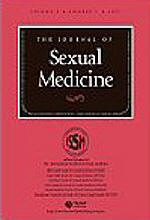Resumen
AIMS: We aimed to determine the prevalence of consumption of oral contraceptives (OCs) among women living in Spain and to identify the factors associated with this consumption. METHODS: Descriptive cross-sectional epidemiologic study on consumption of OCs by women aged 16-50 years resident in Spain. As the dependent variable, we took the answer to the question, "In the last two weeks, have you taken the contraceptives pill?" Independent variables were sociodemographic, comorbidity, and healthcare resources. Using logistic multivariate regression models, we have analyzed the temporal evolution of OCs consumption between 2003 and 2006. MAIN OUTCOME MEASURES: We used secondary individualized data drawn from the 2003 (n=5,807) and 2006 (n=9,103) Spanish National Health Surveys.
RESULTS: In 2003, the 4.99% of women reported having taken the contraceptive pill; this proportion increased to 9.44% in 2006 (P<0.05). Multivariate analysis highlighted the association between OCs use gynecologist visits (odds ratio [OR]=5.67, 95% confidence interval [CI]=2.52-12.79 in 2003, and OR=5.09, 95% CI=2.87-9.02 in 2006); cervical smear test (OR=2.98 95% CI=1.83-4.85 in 2003 and OR=1.79 95% CI=1.28-2.50 in 2006); and risk variables such alcohol consumption or hypertension in the year 2006 (OR=1.53, 95% CI=1.05-2.22). CONCLUSIONS: We can conclude that there was a significant increase in OC use among women living in Spain from 2003 to 2006. The OC consumers in our study were young women who visited the gynecologist and took preventive measures such as smear testing, although they did have risk variables associated with OC, such as alcohol use and arterial hypertension. (Resumen extraído del artículo)






